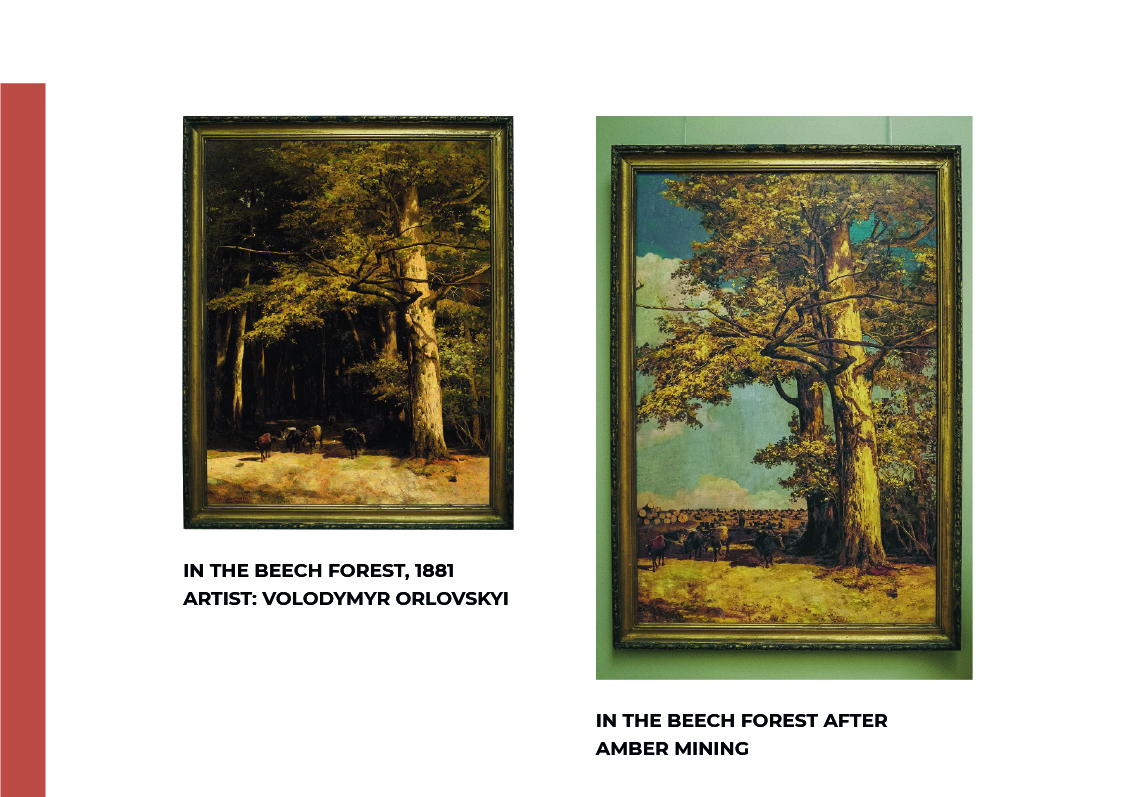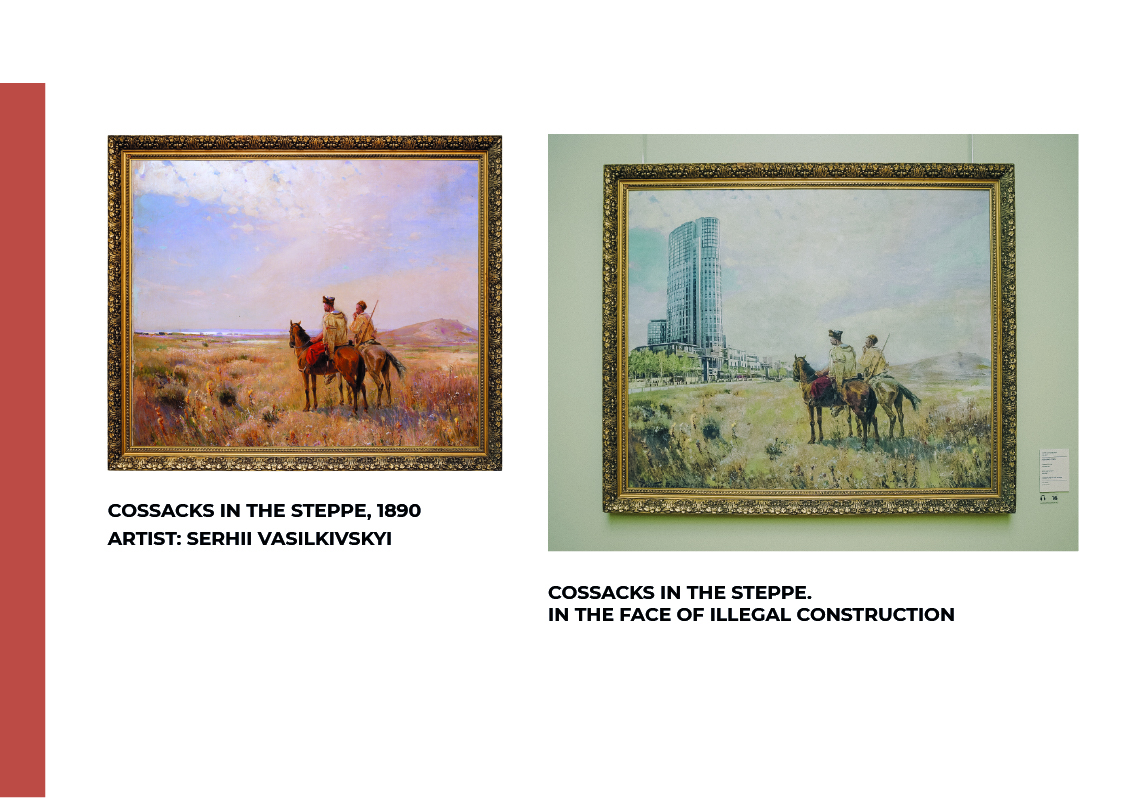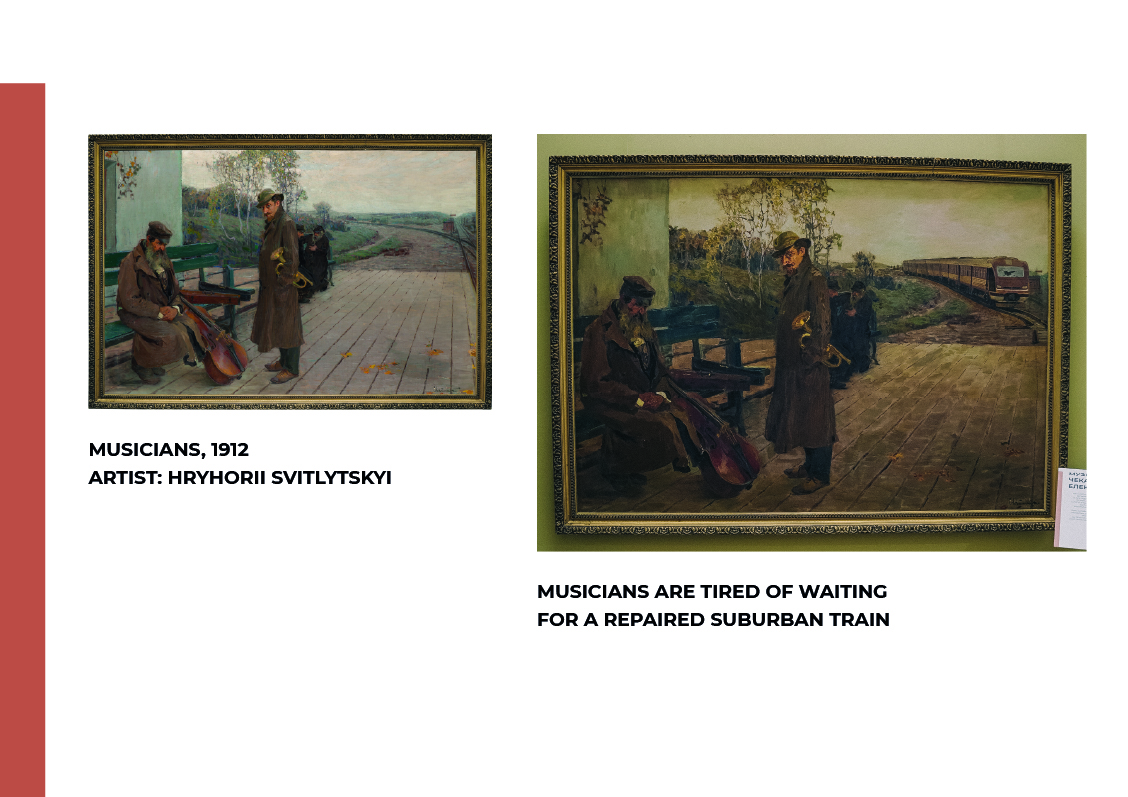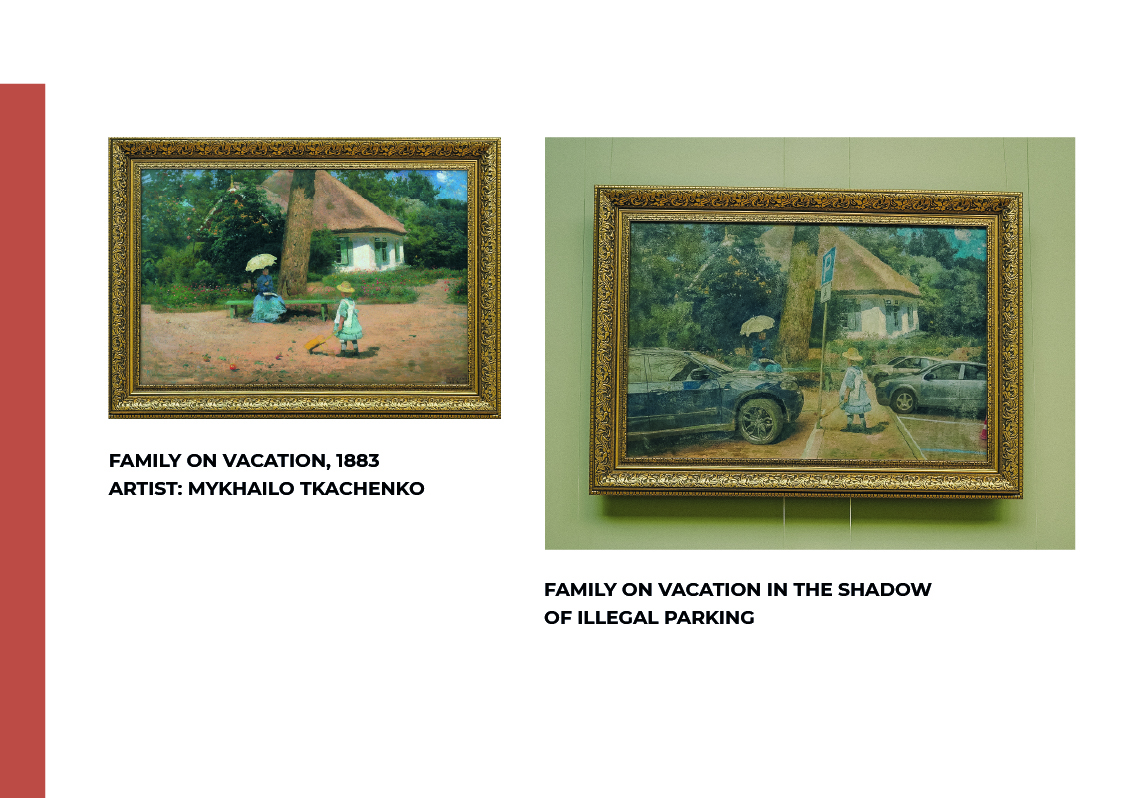What we no longer notice in real life is eye-catching in works of classical art.
December 9, the International Anti-Corruption Day, marked the start of the Corruptionism project which is named by analogy with Impressionism, Realism and other art movements. It was presented at the National Art Museum of Ukraine as part of a permanent exhibition.
The project aims to show how corruption affects the everyday lives of all Ukrainians and to tell how visitors can contribute to the fight against corruption. The concept is that the consequences of corruption suddenly appear in 5 classical works of Ukrainian artists of the 19th and early 20th centuries. For example, in Serhiy Vasylkivsky’s painting, Cossacks in the steppe, a cumbersome high-rise building is constructed in circumvention of the law. And in Vladimir Orlovsky’s painting, In the beech forest, only stumps are left of the leafy trees due to illegal amber mining. There is a plaque next to each work with a description, real cases of corruption in Ukraine and instructions anyone can follow. Since, unlike works of art, such crimes cannot be simply looked at — they must be actively countered.
The project initiator is the EU Anti-Corruption Initiative (EUACI).
“Anti-corruption reform was launched in Ukraine seven years ago, and in the meantime independent anti-corruption institutions were formed, including the National Anti-Corruption Bureau of Ukraine and the National Agency on Corruption Prevention,” said Allan Pagh Kristensen, Head of EUACI, organizer of the project, “it might seem that corruption is something far from everyday life, which takes place behind closed doors of offices. But in fact, its consequences affect the lives of all Ukrainians: illegal construction or parking, deforestation, which causes environmental disasters, abandoned railways, and so on. The Corruptionism project is a way to draw the attention of thousands of people to the topic of corruption using art as communication.”







